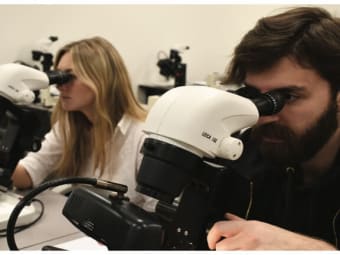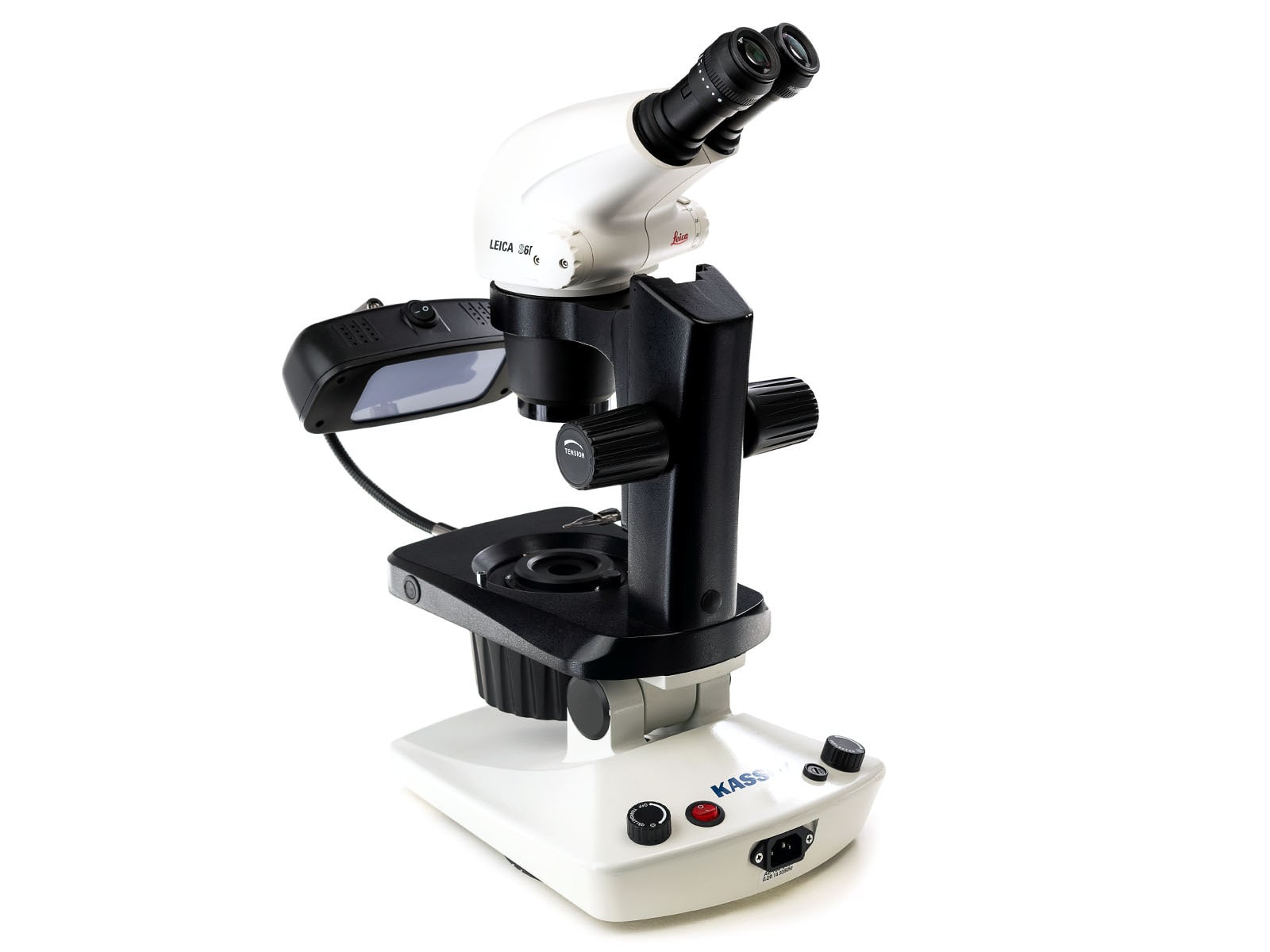Gemologists rely heavily on a very particular kind of microscope, a
gemological microscope. This type of microscope helps identify and
evaluate gemstones, and it has a few specific features that allow a
gemologist to observe inclusions, fractures and striae that might
otherwise go unnoticed. This microscope must not only possess
sufficient magnification power to reveal flaws and inclusions within a
stone, but it must also offer different illumination options. These
illumination options help highlight internal and surface features that
would not be visible otherwise.
Below are some key qualities to consider when selecting a
gemological microscope:
What is the preferred magnification power?
In day-to-day gemology, and for basic details on a stone, a 10x magnification, provided by a loupe, is generally adequate. Working gemologists can normally achieve this magnification need with a standard jeweler’s loupe. It is worth noting that this is also what defines the term “loupe clean” that is used when qualifying the clarity of a stone.
However, the whole point of having a microscope is to see a bit more detail, and most gemological microscopes will offer magnification of at least 40-45x to inspect the internal structures of a gemstone. The extra detail shown through a microscope can sometimes help a gemologist identify a gemstone and even its origin. Generally, a good gemological microscope will offer a higher magnification of 60x to 90x. Anything higher than 120x is unnecessary, so compared to some microscopes out there, the optical requirements are not extreme. The subject matter observed by a gemologist generally has more depth to it than the thin sections observed in other sciences and by the time we have zoomed in to 120x, the depth of field is tenths of a millimeter and it is very difficult to make useful observations at that point.
Gemological microscopes are available in two sizes: smaller and larger. The smaller 'travel' microscope will be light and easily portable but can sometimes lack lighting options, zoom capabilities and outright magnification power. A larger microscope will typically allow a user to zoom in by simply twisting a zoom knob; in contrast, typical science-class microscopes will have three different objective lenses in a rotating turret with each providing a leap in magnification. For both types, higher magnification can be achieved simply with additional eyepieces that offer a multiplying increase on the basic lens.

What are the illumination options and why are they important?
A good gemological microscope should offer a number of illumination options and each of these will permit a viewing technique which has characteristic uses depending on the features we are examining or searching for.
Most will offer a source of light from the below viewing area and that offers some of the defining techniques used in gemological microscopy. The intensity of this 'sub-stage' light will usually be adjustable and additionally there will be an iris to adjust the circle of light coming through.
With the intensity reduced, so as not to subject the viewer to blinding glare, some features are best seen agains the bright background. This is known as Light Field or Bright Field illumination.
Darkfield illumination involves moving a black disk across this bright background while still ensuring light reflecting out of the sub-stage area enters the object being held. It is one of the most useful techniques for examining features within a stone because the oblique, reflected light will illuminate internal features and make them easy to observe against a black background. Darkfield illumination was patented by Robert Shipley Jr. in 1939 who was the oldest son of the founder of the Gemological Institute of America, and he made a few very useful contributions to the field of gemological instruments.
Overhead or top illumination involves lighting that may be provided by a fluorescent tube, a spotlight, or both which simply shine down onto the object from above and make it easier to spot surface features like polish marks or scratches. On a travel microscope, the top illumination is generally provided by a lamp sitting at the junction of the head and neck of the microscope. On a full-size microscope, there will usually be a tilt-adjustable lamp with daylight fluorescent tubes to provide general illumination. Sometimes there is a built-in fiber-optic light with an adjustable gooseneck, but often a good microscope is better served with a stand-alone fiber-optic lamp.
With experience, a gemologist may manipulate or augment any of these techniques by diffusing the intensity of the lights using a translucent material or introducing a filter to polarize the light or create a monochromatic environment.
What is a Trinocular Microscope? Do I want one of those?
Gemological microscopes have binocular heads that allow an eyepiece
for each eye and a viewer gets a ‘stereo’ view. Hence the other name
"stereo zoom", that you will sometimes hear. There is
another option that is very attractive to gemologists, it is possible
to get a trinocular head: A trinocular microscope head features a
dedicated eyepiece for attaching a camera to the microscope while
leaving the other two oculars for the observer.
This is the ideal choice for serious photography enthusiasts in
gemology. The art of taking pictures through a microscope is known as
photomicrography, and a student gemologist will be increasingly drawn
to it, as they learn and appreciate more about the internal and
external structures in gems and minerals.

What options and accessories should you look for in a gemological microscope?
A full-sized gemological microscope will usually tilt and swivel to some degree. It is important to be able to adjust it to ensure comfort as neck and shoulder fatigue will set in quickly otherwise.
Proper accessories are helpful for securely holding, manipulating,
observing and photographing gemstones. Depending on your specific
requirements, you might also need accessories capable of accommodating
stones of various sizes as well as jewelry, such as rings.
There hasn’t been much change in the fundamentals of a
gemological microscope in the last 90 years, but one noticeable
development is the increased use of LED lighting. Adoption of LED
lighting has been slow, because LEDs haven’t advanced yet to perfectly
mimic the relatively clean spectrum of an incandescent light bulb;
although, they are much closer now than they were ten years ago and
new microscopes are sold with LED lighting.
For many gemologists who work for extended periods with a
microscope, the heat that comes off a base burning the older
incandescent bulbs is unpleasant. While many older microscopes can be
upgraded to LED lighting, this is costly and only certain models are
compatible with the upgraded bases offered by third-party manufacturers.
In your quest for the ideal microscope, dealers typically offer a range of gemological microscopes to cater to your specific needs and budget, and the second-hand market is strong. Buy the best you can afford because a good microscope will last for most of your career, and some of the incredible things you get to look at will pass through your hands, never to be seen and appreciated by you again. You want that memory to be of a pin-sharp image that is perfectly illuminated!

